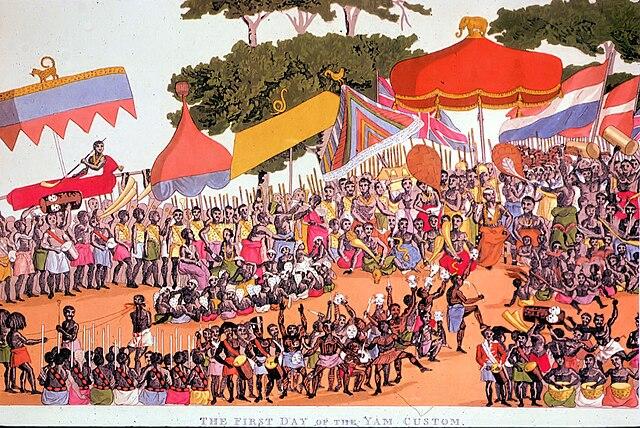Unveiling the Golden Age of the Ashanti Kingdom: A Tale of Wealth, Power, and Intrigue
Table of Contents
Introduction
The Ashanti Kingdom, a vibrant and prosperous West African empire, experienced its zenith during the 18th and 19th centuries, marking a period known as its Golden Age. This era witnessed an unprecedented confluence of wealth, power, and intrigue, shaping the kingdom’s destiny and leaving a lasting legacy on the region.
The Rise to Power
The Ashanti Kingdom emerged in the 17th century under the leadership of Osei Tutu, known as the “Founder King.” He forged alliances with neighboring tribes, centralized authority, and established a formidable army. Through a series of strategic conquests and diplomatic maneuvers, the kingdom expanded its territory and influence, becoming one of the most dominant forces in West Africa.
The Golden Age
The 18th and 19th centuries marked the pinnacle of Ashanti power and prosperity. Under successive kings, including Opoku Ware, kusi Obodom, and Asantehene Osei Bonsu, the kingdom enjoyed a period of unprecedented wealth and stability.
Economic Prosperity
The Asantehene controlled a vast network of trade routes, enabling the kingdom to access gold, ivory, slaves, and other valuable commodities. Gold became the symbol of Ashanti riches, and it was used to create elaborate jewelry, regalia, and artwork. Trade flourished with European merchants, further bolstering the kingdom’s economy.
Military Might
The Ashanti army was renowned for its discipline and effectiveness. Armed with muskets, cannons, and traditional weapons, they effectively defended their territory from external threats and expanded their empire. The kingdom’s military prowess allowed it to dominate neighboring states and control key trade routes.
Cultural Achievements
The Ashanti were also a highly cultured society. they developed their own advanced system of writing and record-keeping, and their oral traditions showcased a wealth of ancient knowledge and stories. They were skilled craftsmen, renowned for their goldsmithing, pottery, and weaving techniques.
Intrigue and Conflict
despite its wealth and power, the Ashanti Kingdom was not immune to internal strife.Succession disputes, power struggles, and conflicts with neighboring states threatened the kingdom’s stability. European powers also encroached upon Ashanti territory,leading to a series of wars and negotiations.
The Asante Yaa Asantewaa War
In 1900, the Ashanti Kingdom faced one of its most severe challenges: the Asante Yaa Asantewaa War. led by Queen Mother Yaa Asantewaa, the Ashanti fought against British colonial rule. despite their bravery, the Ashanti were defeated, and the kingdom was annexed into the British Empire.
Conclusion
The golden Age of the Ashanti Kingdom was a period of extraordinary wealth, power, and cultural achievements. Through strategic leadership, economic prosperity, and military might, the Asantehene established a formidable empire that shaped the history of West Africa. despite internal conflicts and external challenges, the Ashanti legacy continues to inspire and fascinate, serving as a testament to the indomitable spirit of its people.

